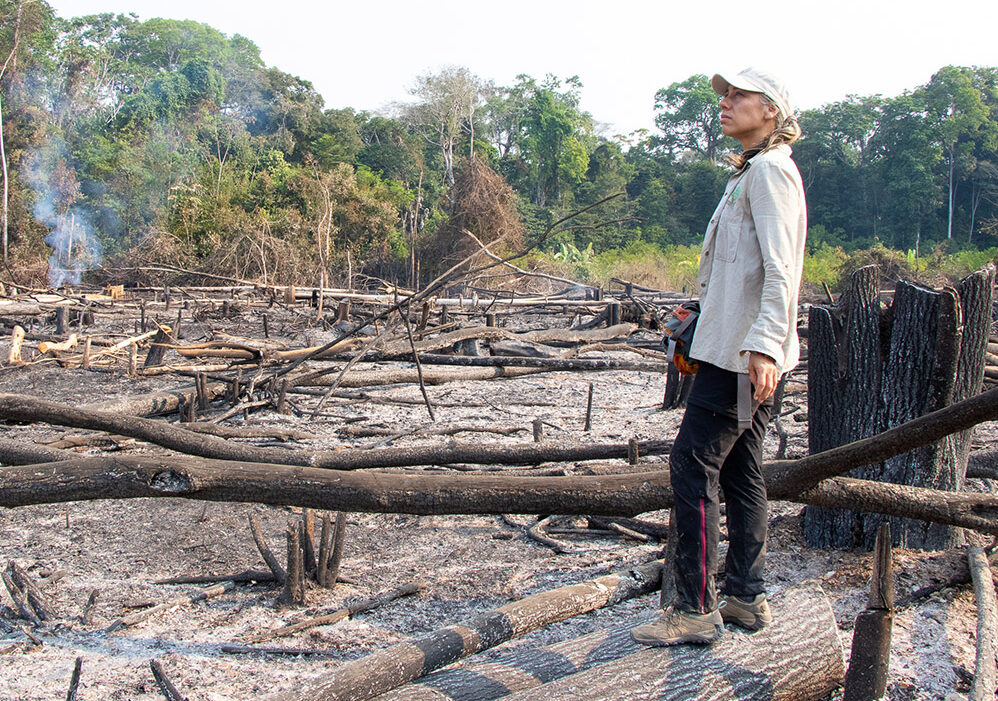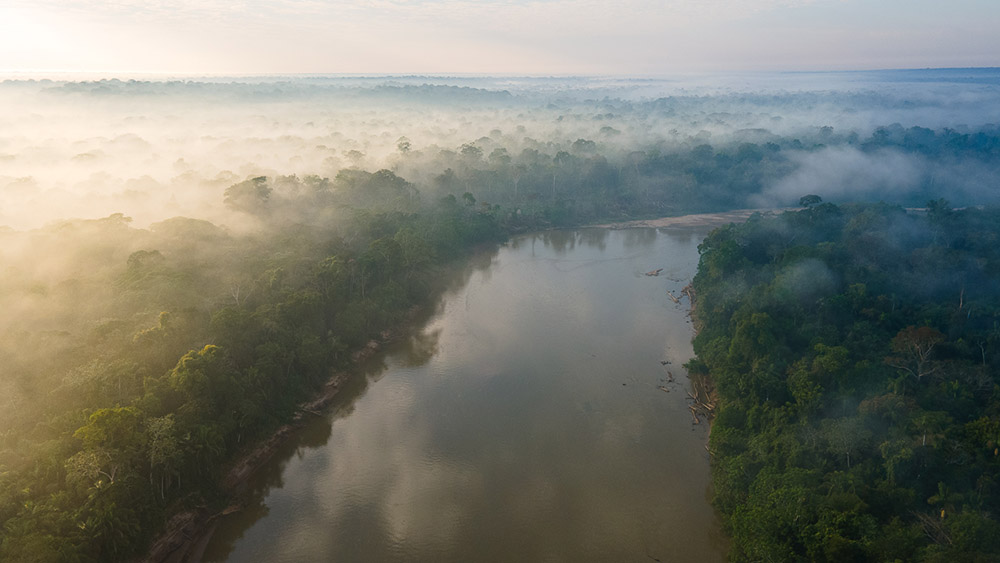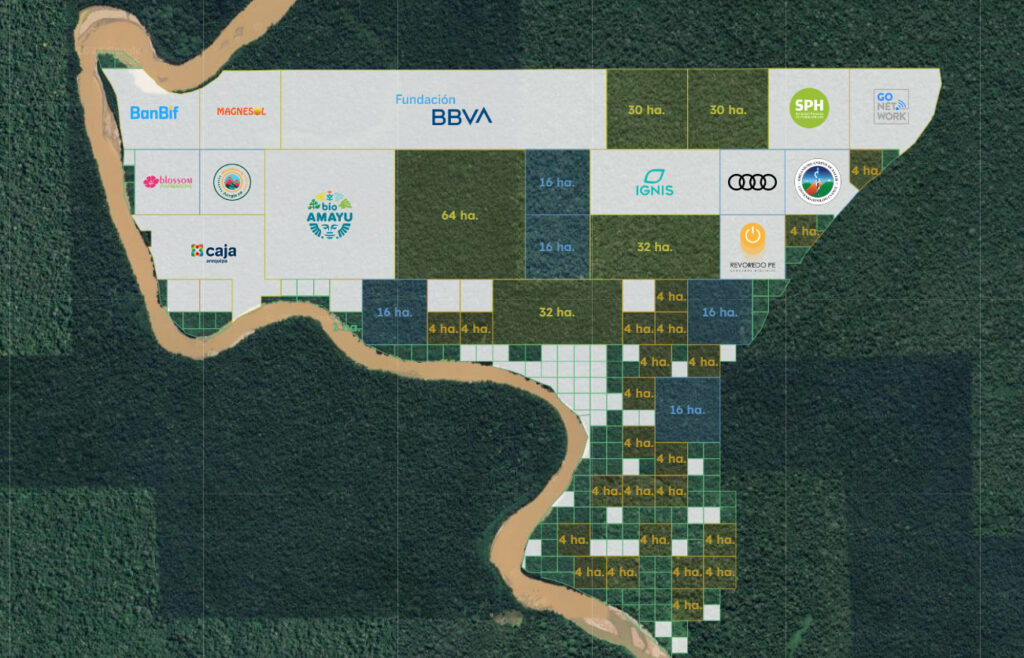Durante la primera semana de noviembre de cada año se celebra la Semana Forestal Peruana. Nuestro país se sitúa entre los diez países del mundo con mayor biodiversidad y ocupa el 2do lugar en mayor superficie de bosque amazónico después de Brasil. El Perú es netamente amazónico y la mayor riqueza está en su biodiversidad y los servicios que brinda.
Loss of forests
But what is happening with the Amazon? The loss of forest area has reached critical proportions, and it is honestly depressing. Up to 2020, 12 million hectares of forest have been destroyed in the Peruvian Amazon ¹, and the pace of the degradation keeps on increasing. It’s been confirmed that the atmospheric layer atop the Amazon has dried up progressively over the past 20 years, increasing the demand for water and leaving wide ecosystems vulnerable to droughts without any natural explanation. Due to the deforestation and degradation of the forest, the Amazon is reaching the tipping point upon which an ecosystem collapses and gradually becomes a desert.
Among the main direct causes of deforestation is the agricultural expansion, the gold mining, and livestock raising; and as indirect causes we can point towards the construction of highways, corruption, informality, and land trafficking. But it is not enough to simply stop deforestation.
Degradation vs Deforestation
There’s an important distinction between the terms ‘degradation’ and ‘deforestation’. The latter happens when the entire forest is razed down, leaving behind those holes in the greenery that can be seen from airplanes or satellite images. However, degradation is instead nearly invisible for both satellite and aerial views. Degradation occurs, for example when there is selective logging of trees that support the ecosystem as a whole. We now know that degradation of a forest and a natural ecosystem emits almost as many Greenhouse Gasses as deforestation itself. What’s more, degradation leads to the loss of diversity and humidity, a decrease of ecologic functions (ecosystemic services), and higher flammability (higher risk of fires).
The main reason behind the degradation of the forests is the forestry extraction of ‘skimmed wood’; or the extraction of specific species of trees seen as more valuable in the market – which also promotes the decapitalization of the forest in its natural state. This causes “commercial extinctions” like those of palo rosa, romerillo, caoba, lupuna, tornillo, ishpingo, and nowadays being the Shihuahuaco’s turn, the Chinese market’s favorite wood. The shihuahuaco (Dipteryx sp) is in grave danger, as its accelerated extraction by the industry for its use as parquet wood is driving the species to its impending disappearance. The forestry sector to this day hasn’t managed to guarantee that the management of this resource is sustainable, compromising both the production of goods as well as the environmental services upon which depend our lives (CNF, 2022).
The role of the forest in the water cycle
But what environmental services do we mean? The forests aren’t important only for their absorption of carbon dioxide and oxygen regeneration, but there is also a crucial function that isn’t being talked about enough when it comes to the climate crisis: the role of the forests in the water cycle and the cooling of the atmosphere. To understand this process, one needs to consider the nature of the planetary cycle of water.
Water is available in great quantities in the planet, and it cycles from the ground to the surface and the atmosphere. The transportation of water from the surface to the air is achieved via evaporation and evapotranspiration, or the letting of water into the air via the plant life. The water vapor thus generated is present in the entire atmosphere, and it’s only when it starts to condense that clouds form. Then, the clouds continue the process of condensation until rain is produced.
Forests represent about 48% of all the land evapotranspiration. To have rain and clouds it is necessary to have a clean atmosphere, and great areas of evapotranspirative forests.
The urgency of protecting our forests
Given the ecologic and biodiversity differences between plantations and natural forests, the capacity of forests to generate and liberate enormous quantities of cloud-forming nuclei is directly linked to the maturity of the forest. This means that we should prioritize protecting the largest number of ancient forests that we can, and if possible, try to restore the lost forest ecosystems. The forests are our saviors!
In this forest week, we want to show the world that collaborating to protect and conserve our forests is possible via alliances to protect hectares of primary forest. Big companies such as the BBVA Foundation have already joined us in this work, and this alliance is a great example of the actions we can all undertake – both as organizations, and as individual people. After all, by protecting the health of the forests, we protect the health of the planet and of ourselves. What are you waiting for to join?


